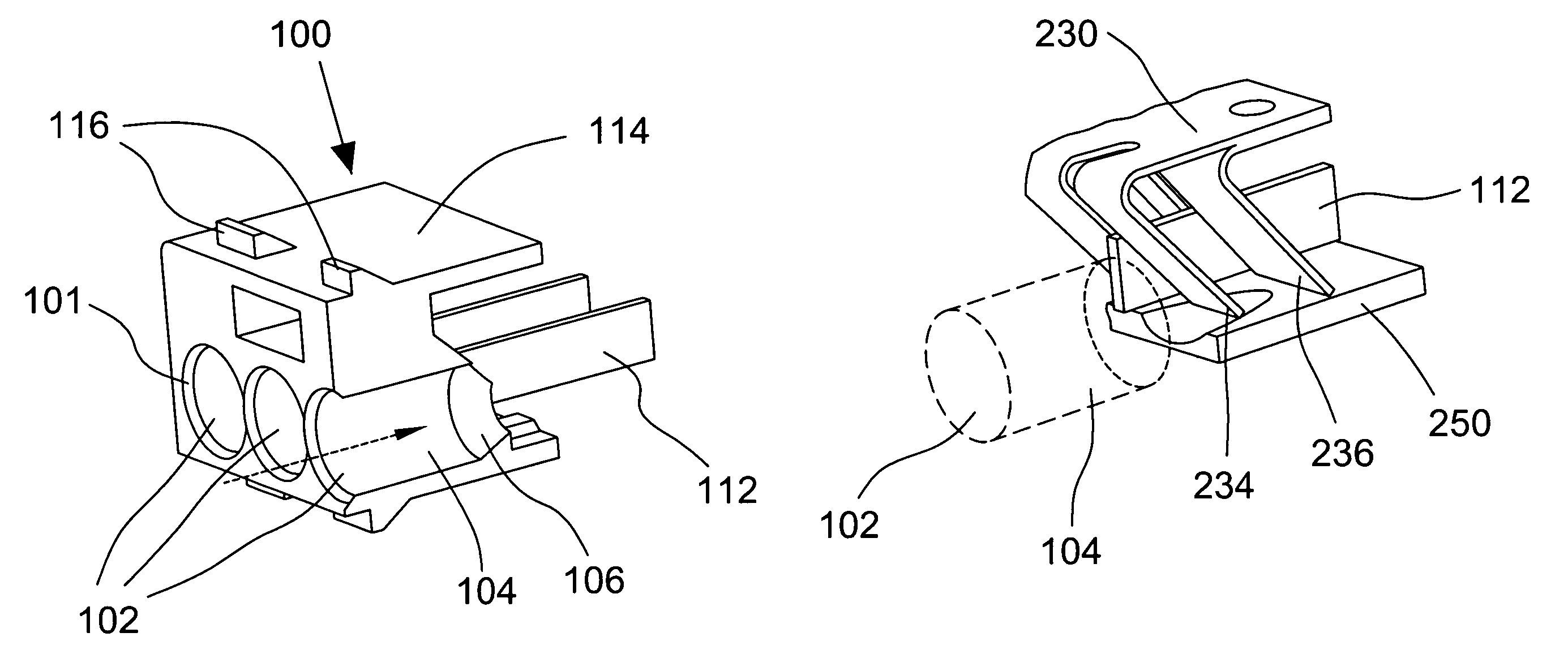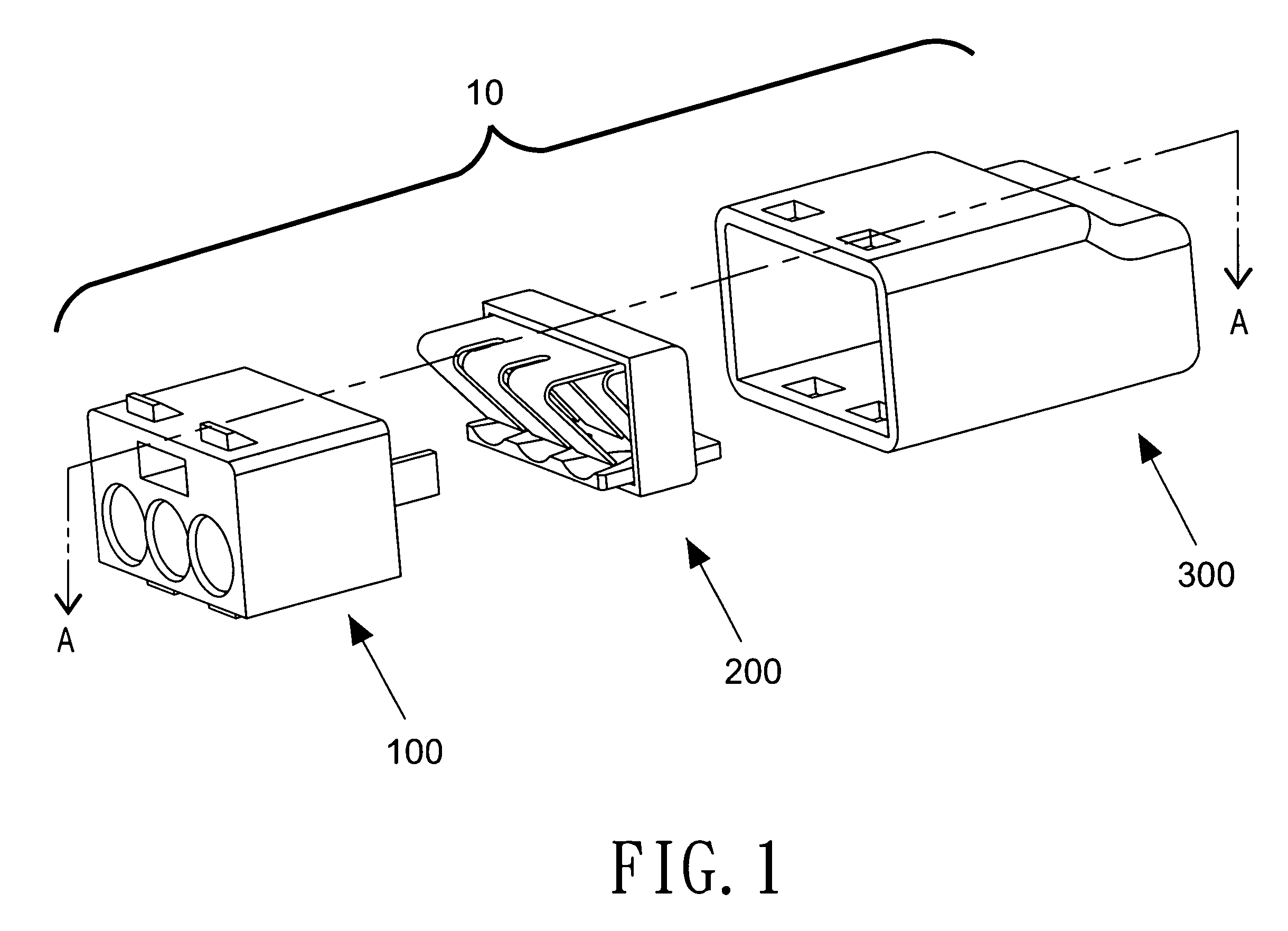Electrical wire connector
a technology of electrical connectors and wires, applied in the direction of contact members penetrating/cutting insulation/cable strands, basic electric elements, electrical equipment, etc., can solve the problems of not being able to consider the true ease of use, not being able and all prior wire connectors failed to provide good electrical conduction and ease of use. , to achieve the effect of maximizing mechanical retention strength and electrical connection, and being cheap to manufactur
- Summary
- Abstract
- Description
- Claims
- Application Information
AI Technical Summary
Benefits of technology
Problems solved by technology
Method used
Image
Examples
Embodiment Construction
[0020]FIG. 1 is an exploded perspective view of a push-in wire connector in accordance with a preferred embodiment of the present invention. The wire connector 10 comprises three components including a guide and lock element 100, a conduction and retention element 200 and an enclosing element 300. FIG. 6 is a cross-sectional view of an assembled wire connector of FIG. 1. With simultaneous reference to FIGS. 1 and 6, a wire connector 10 according to the preferred embodiment of the present invention is assembled using these three connector elements 100, 200 and 300.
[0021]When assembling, the conduction and retention element 200 mates with the guide and lock element 100 and then the mating slides into the opening of the enclosing element 300 and securedly locked therein as is depicted in the cross-sectional view of FIG. 6. This is clearly illustrated in the cross-sectional view of FIG. 6 by different shading for each of the three elements 100, 200 and 300.
[0022]As an assembled wire con...
PUM
 Login to View More
Login to View More Abstract
Description
Claims
Application Information
 Login to View More
Login to View More - R&D
- Intellectual Property
- Life Sciences
- Materials
- Tech Scout
- Unparalleled Data Quality
- Higher Quality Content
- 60% Fewer Hallucinations
Browse by: Latest US Patents, China's latest patents, Technical Efficacy Thesaurus, Application Domain, Technology Topic, Popular Technical Reports.
© 2025 PatSnap. All rights reserved.Legal|Privacy policy|Modern Slavery Act Transparency Statement|Sitemap|About US| Contact US: help@patsnap.com



